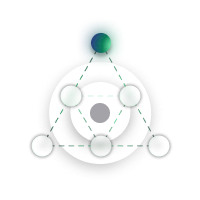
User Testing Toolkit
Overview
The InGAME User Testing Toolkit is a suite of guides, tools, resources and processes developed to undertake various types of User Testing for games. It guides you through the planning and running user testing activities, covering both remote and in person studies.
Every project is different and may require some adjustment, but the overall process has been tested in a range of scenarios.
Throughout this toolkit are links to documents or resources which can be used as guidance or templates. These assist the planning and execution of a fast turnaround user testing process, all syncing with the game development process.
Quickstart Guide
The toolkit process is made up of four activities:
- Goals & Objectives – Establish the aims and objectives at the start of any user testing.
- Session Planning – Plan your user testing sessions, participants and logistics.
- Sessions – Run user testing sessions capturing relevant data.
- Analysis & Reporting – Produce a findings report to distribute to the development team
You can either start at Activity 1 and follow the guide to plan and run a user testing activity, or jump to the section of most relevance.
Activity 1: Goals & Objectives
Establish the aims and objectives at the start of any user testing.
You will plan the user testing through three steps:
Aligning Goals: You will identify key project details, opportunities for user testing, the information being sought, and who from.
Research Question Data: You will dig deeper into the questions the user testing will be answering, and what data will answer these questions.
Method Planning: You will consider what approaches will be used to gather the information you need, and the practicalities of the methods.
Use the Goals and Objectives Miro to capture information on the goals and objectives of the user testing. Follow the instructions on the board to complete all steps.
The activity is ideally completed as a group, but can be completed individually. It will take around 2 hours.
Resource 1: User Testing & Development Timeline
Activity 2: Session Planning
Plan your user testing sessions, consider who will be taking part, the logistics for running the session and the game version you shall be testing. It is relevant for Interviews, Focus Groups, Playtests, Usability Playtests and Surveys. You will plan the user testing through the following four steps and will need the miro board below to get started.
Open the Miro board ›
Build checklist link ›
With the session planned, you can start recruitment for the number of participants from the sources you have planned for in Step 1.
Recruitment of participants can be one of the time consuming and challenging parts of the user testing process. Below are some tips:
- Keep a record of people signed up, such as a spreadsheet or shared document
- Record all relevant information, for example, contact details or session dates
- It is likely that some participants will drop out. If you have a minimum requirement, consider having backups or extra participants to cover this situation.
- The longer the time passes between the signup and the sessions, the more likely it is that some participants will drop out
- Be sure to leave sufficient time to recruit the numbers you need – this may take longer than you anticipate
- Consider if you need to screen participants. For example, if you are looking for players with prior experience of the game, you may need to confirm this during the recruitment process.
- Be sure to clearly state any requirements (such as age, game experience or session dates/times) to reduce sign ups who will need to be filtered out later
- If you are struggling to recruit sufficient participants, consider if there’s a method you can use with lower requirements – signing up participants who aren’t in your target groups to make up the numbers will reduce the validity of any findings
Activity 3 - Sessions
This activity helps you run the user testing sessions, creating a reliable and consistent process to capture the data needed to answer the research questions in a way that minimises bias and error.
Session tips slides ›
Session Miro Board ›
- Use the Moderation Guide Template as a guide for format and contents
- Test out the moderation guide
- Are you conformable with the flow of each session?
- Are the participants getting all the information they need to?
- Is it clear what everyone’s responsibilities are?
- Are you comfortable with the scripts / questions?
- Distribute to session moderators/facilitators
- Ensure all moderators/facilitators are familiar and happy with the guide, and their roles
- Revise the moderation guide as needed
- This will likely take 90 minutes.
- Collect all paperwork for each participant
- Collect all data from the sessions
- Recordings, Analytics, Observation Notes etc using templates such as the Note Taking Template
- Store the data according to the policy outlined at the start of the project.
Activity 4 - Analysis & Reporting
This activity helps you to produce the findings report and distribute it to the development team.
The process and guides will assist in analysing the data in a bias free manner, and producing an actionable report which the development team can use to improve the user experience of the game.
Slides ›
- Perform the data analysis to produce the findings for the report
- This should be focussed on answering the key questions identified in Activity 1
- Other observations and issues such as bugs can also be catalogued, but should be treated separately
Once the report(s) have been completed, distribute it to the project stakeholders.
- Making stakeholders aware of the findings
- Allowing for any questions answered or clarifications to be made
- Deciding and capturing actions and next steps

